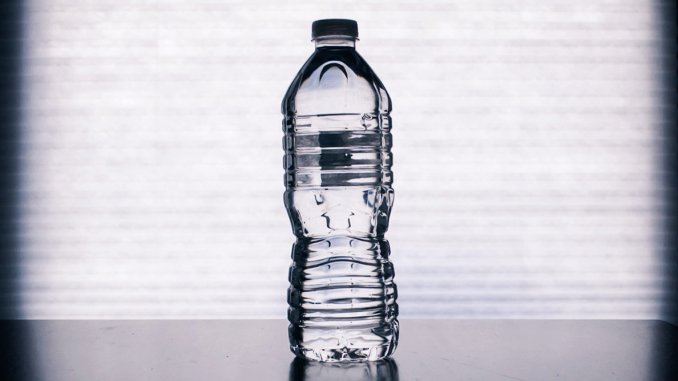《自然》:二氧化碳是清洁的煤和苏打水
时间:2009-04-08 阅读: 我要评论:
文章介绍了一种将二氧化碳转化为煤燃料的设想。该文发表在2009年4月2日的《自然》杂志。
下面附其原文(全文):
News and Views
Nature 458, 583-584 (2 April 2009) | doi:10.1038/458583a; Published online 1 April 2009
Environmental science: Clean coal and sparkling water
Werner Aeschbach-Hertig
Abstract
Subsurface storage of carbon dioxide is a major option for mitigating climate change. On one account, much of the gas sequestered in this way would end up as carbonic acid in the pore waters of the host rock.
Atmospheric concentrations of greenhouse gases, especially carbon dioxide, continue to rise at an alarming rate. We seem unable to tame our appetite for fossil fuels on a meaningful timescale, and the concept of carbon capture and storage has emerged as a serious option for reducing CO2 emissions to the atmosphere. A 'clean coal' technology, in which CO2 is collected from coal-fired power plants and stored safely below ground, might enable us to continue using this comparatively cheap and abundant energy source without climatic worries.
However, little is known about the long-term fate of large quantities of CO2 put into geological storage. Gilfillan et al.1 (page 614 of this issue) illuminate this crucial matter by showing that dissolution in groundwater is by far the most important trapping mechanism for CO2 in the subsurface environment. In other words, sequestering CO2 in geological formations would probably produce vast quantities of highly CO2-enriched sparkling water.
The safety of geological storage of CO2 is obviously a central concern in planning carbon sequestration on a large scale. When CO2 is injected into the subsurface, it will be retained by physical and geochemical mechanisms2. Physical trapping is provided by the presence of sealing, low-permeability rock formations above the targeted layer. Such cap rocks are essential features of natural gas and oil reservoirs, and are a primary requirement for CO2 storage sites. A further level of safety is added by geochemical interactions that remove the pure CO2 phase, either through dissolution in water (solubility trapping) or by precipitation of carbonate minerals (mineral trapping). Clearly, mineral trapping is the preferable pathway, as it promises to store the carbon over geological timescales.
To assess the risk of leakage from storage reservoirs, an expansive programme for monitoring underground CO2 injection in a variety of geological settings has been called for3. There are only a few currently active pilot sites, and more are needed. But that apart, such monitoring programmes can reveal the effects of carbon sequestration only on the engineering timescale — they do not yield a direct answer to questions regarding the long-term behaviour of CO2 in geological storage.
In this respect, the approach taken by Gilfillan et al.1 is logical and informative. The authors used CO2-rich gas fields as natural analogues for future carbon-storage sites. Other researchers have exploited this idea4. But in offering a self-consistent evaluation of noble gas and carbon isotope data from nine natural gas fields in the United States, China and Hungary, the present study stands out by virtue of the large range of gas fields included and the methods used to identify the fate of the CO2.
A central parameter of this analysis is the CO2/3He ratio of the gases. The basic idea is that 3He, a noble-gas isotope originating almost exclusively from Earth's mantle, behaves as a conservative tracer in the crustal environment of the gas reservoirs studied. The primary gas emplaced in these reservoirs has a characteristic CO2/3He ratio, often indicating that it is of magmatic origin. Any reduction of this ratio is ascribed to the removal of CO2 from the gas phase.
Gilfillan and colleagues' first, intriguing, finding is that declining CO2/3He ratios in the gases are related to increasing concentrations of 4He and 20Ne. These correlations hold within individual fields as well as across the combined data set. The authors argue that this systematic behaviour strongly suggests that the gas has interacted with water, which provides a plausible source of crustal 4He and atmospheric 20Ne. Whereas the highly soluble CO2 dissolves in the groundwater, the low-solubility noble gases He and Ne degas from the water into the gas phase, thereby producing the observed relationships. This indicates that solubility trapping is an important process, but does not rule out the possibility that mineral trapping also occurs.
A quantitative assessment of the contributions of the two trapping mechanisms is provided by a second line of evidence based on the 13C/12C isotope ratios of the CO2 gas. This ratio is expected to change if CO2 is removed by the formation of carbonate minerals, as the heavier isotope 13C precipitates preferentially. Such an isotope fractionation also occurs as CO2 dissolves in water, but to a lesser degree, depending on the prevailing pH conditions. By comparing the observed relationships between the CO2/3He ratio (as a measure of CO2 removal) and the 13C/12C isotope ratio in the different gas fields with models of the expected fractionation for either process, the authors show that the data are incompatible with mineral trapping, but can be explained by dissolution in water.
Gilfillan and colleagues' overall conclusion1 is that in the nine gas fields investigated, covering different geological settings, solubility trapping played a major part, removing up to 90% or more of the initially emplaced CO2. Mineral trapping played a minor part at best. Although dissolution in groundwater implies the possibility of CO2 transport and eventual leakage to the atmosphere, as illustrated by Figure 1 and as is thought to occur in natural gas fields4, this result does not mean that safe geological storage is impossible. But it highlights the need for a thorough assessment of the hydrogeological setting of prospective storage sites. And it demonstrates the power of the methods involved in assessing the effectiveness of different geochemical trapping mechanisms.

The Wallender Born or 'Brubbel', a CO2-driven cold-water geyser in the village of Wallenborn in western Germany, provides a natural illustration of CO2 leakage from geological storage. Although largely harmless, such leakage would be undesirable in carbon-sequestration projects.
Werner Aeschbach-Hertig is at the Institut für Umweltphysik, Universität Heidelberg, D-69120 Heidelberg, Germany.
Email: aeschbach@iup.uni-heidelberg.de
Email: aeschbach@iup.uni-heidelberg.de
| ”我们失败了”:科学家正式宣布,大堡礁面临死亡 |
| 《Nature》:气候变化影响南极海狗生存 |
| 《Nature》:科学家绘制受气候变化影响的物种地图 |
| 《Nature》:美国甲烷实际排放量比预测值高50% |
| Scientific Reports: 汽车尾气危害昆虫,降低蜜蜂“工作效率” |
| 《Nature》:极端气候可能造成大气CO2浓度升高 |
特别声明:本文转载仅仅是出于传播信息的需要,版权归原作者所有,并不意味着代表本网站观点或证实其内容的真实性; 如其他媒体、网站或个人从本网站转载使用,须保留本网站注明的“来源”,并自负版权等法律责任; 作者如果不希望被转载或者联系转载稿费等事宜,请与我们接洽:service#environmentor.cn(请将#改为@)。
来源: 作者: (环境人 Environmentor.Cn)





